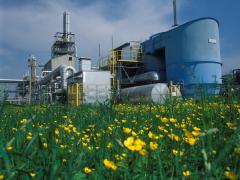UNEP Emissions Gap Report 2019
On current unconditional pledges, the world is heading for a 3.2°C temperature rise, according to the 2019 edition of UNEP’s annual Emissions Gap Report. Technologies and policy knowledge exist to cut emissions, but transformations must begin now. Researchers at PBL were among the leading and contributing authors of this study.
On current unconditional pledges, the world is heading for a 3.2°C temperature rise
Unless global greenhouse gas emissions fall by 7.6 per cent each year between 2020 and 2030, the world will miss the opportunity to get on track towards the 1.5°C temperature goal of the Paris Agreement.
Crucially, the report says all nations must substantially increase ambition in their Nationally Determined Contributions (NDCs), as the Paris commitments are known, in 2020 and follow up with policies and strategies to implement them. Solutions are available to make meeting the Paris goals possible, but they are not being deployed fast enough or at a sufficiently large scale.
The report finds that greenhouse gas emissions have risen 1.5 per cent per year over the last decade. Emissions in 2018, including from land-use changes such as deforestation, hit a new high of 55.3 gigatonnes of CO2 equivalent.
Nations must triple their efforts to achieve the 2 °C target
To limit temperatures, annual emissions in 2030 need to be 15 gigatonnes of CO2 equivalent lower than current unconditional NDCs imply for the 2°C goal; they need to be 32 gigatonnes lower for the 1.5°C goal. On an annual basis, this means cuts in emissions of 7.6 per cent per year from 2020 to 2030 to meet the 1.5°C goal and 2.7 per cent per year for the 2°C goal. To deliver on these cuts, the levels of ambition in the NDCs must increase at least fivefold for the 1.5°C goal and threefold for the 2°C goal.
Authors
Specifications
- Publication title
- UNEP Emissions Gap Report 2019
- Publication date
- 26 November 2019
- Publication type
- Report
- Publication language
- English
- Product number
- 3625




